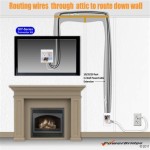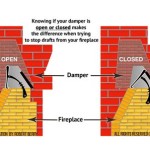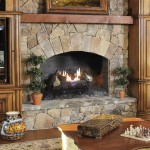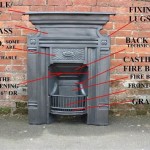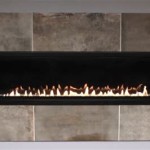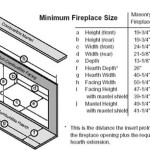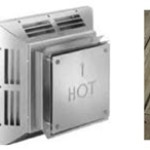Gel Fuel Fireplace Inserts: A Convenient and Efficient Heating Solution
Gel fuel fireplace inserts offer a convenient and efficient way to create a cozy ambiance in any space. These inserts are designed to fit within existing fireplaces, transforming them into modern, decorative features that provide supplemental heat. Gel fuel, the primary source of energy for these inserts, is a clean-burning, odorless, and smokeless alternative to traditional wood-burning fireplaces.
What is Gel Fuel?
Gel fuel is a liquid fuel derived from denatured alcohol and other additives. It is typically sold in pre-filled containers and does not require any type of ignition source other than a simple match. Gel fuel is a safe and efficient option for fireplace inserts as it burns cleanly and produces minimal ash or smoke. The fuel comes in various sizes, allowing users to adjust the heat output based on their needs.
Benefits of Gel Fuel Fireplace Inserts
Gel fuel fireplace inserts offer several advantages over traditional fireplaces, making them a popular choice for homeowners looking for a convenient and efficient heating solution:
Easy Installation and Maintenance
Gel fuel fireplace inserts are generally easy to install. Most models are designed to fit seamlessly into existing fireplace openings without requiring extensive modifications. Maintenance is also minimal, as there is no need for chimney cleaning or ash removal. The gel fuel containers are disposable, eliminating the need for frequent refueling and cleanup.
Safety and Convenience
Gel fuel fireplace inserts are considered a safe and convenient option. The gel fuel burns cleanly and efficiently, producing minimal smoke and ash. The fuel containers are designed with childproof features and are typically made from fire-resistant materials. Gel fuel is also readily available at most hardware stores and online retailers.
Aesthetic Appeal
Gel fuel fireplace inserts come in a variety of styles and designs, allowing homeowners to enhance the aesthetic appeal of their living spaces. They are available in different sizes and finishes, ranging from sleek and modern to rustic and traditional. The flickering flames create a warm and inviting ambiance, adding a touch of elegance to any room.
Versatile and Portable
Gel fuel fireplace inserts are highly versatile and can be used in various settings. They are suitable for both indoor and outdoor use, making them ideal for patios, balconies, or even outdoor tents. The portability of these inserts allows homeowners to move them around as needed, creating a cozy atmosphere in different areas of their homes.
Environmentally Friendly
Gel fuel is a clean-burning fuel that emits minimal pollutants. It is a sustainable and eco-friendly option compared to traditional wood-burning fireplaces. The fuel does not require any cutting of trees or other natural resources, making it a responsible choice for environmentally conscious homeowners.
Cost-Effectiveness
While the initial purchase cost of a gel fuel fireplace insert can be higher than a traditional fireplace, the operating costs are significantly lower. Gel fuel is relatively inexpensive compared to other heating sources, such as wood or gas. The reduced maintenance requirements also contribute to the overall cost-effectiveness of these inserts.
Considerations Before Purchasing a Gel Fuel Fireplace Insert
Before purchasing a gel fuel fireplace insert, consider the following factors:
Heat Output
Gel fuel fireplace inserts come in various sizes and heat outputs. Determine the size of the room and the desired heat level to choose an insert with the appropriate BTU rating. Consider the ambient temperature and insulation levels of the room when evaluating the heat output.
Style and Design
Gel fuel fireplace inserts are available in a wide range of styles, from contemporary to traditional. Consider the existing décor and overall ambiance of the room when selecting an insert that complements the space.
Safety Features
Always prioritize safety when purchasing a gel fuel fireplace insert. Look for models with childproof features, fire-resistant materials, and proper ventilation systems. Read the manufacturer's instructions carefully and follow all safety guidelines for safe operation.
Conclusion
Gel fuel fireplace inserts provide a convenient, efficient, and aesthetically pleasing heating solution for homeowners seeking a cozy and inviting ambiance. These inserts offer a range of benefits, including ease of installation and maintenance, safety features, aesthetic appeal, versatility, and environmental friendliness. When choosing a gel fuel fireplace insert, consider factors such as heat output, style, safety features, and budget to ensure a suitable choice for your needs.

Real Flame 18 In Convert To Gel Log Insert Oak Com

Gel Fireplace Logs Can Transform An Unused Future Expat

Gel Fuel Fire Log Insert Luxury

Gel Fuel Fire Log Insert Luxury

How To Make Gel Fuel For Your Ventless Fireplace A Diy Guide Pallet Furniture

Flex 122by Bay Fireplace Insert Ecosmart Fire

Real Flame Devin Ventless Gel Fireplace Com

Buyer S Guide For Electric Fireplaces And Gel Fuel

Outdoor Greatroom Company Inspiration Gel Fuel Fireplace Hearth And Home Distributors Of Utah Llc

Flex 104pn Bxl Peninsula Fireplace Insert Ecosmart Fire
Related Posts

